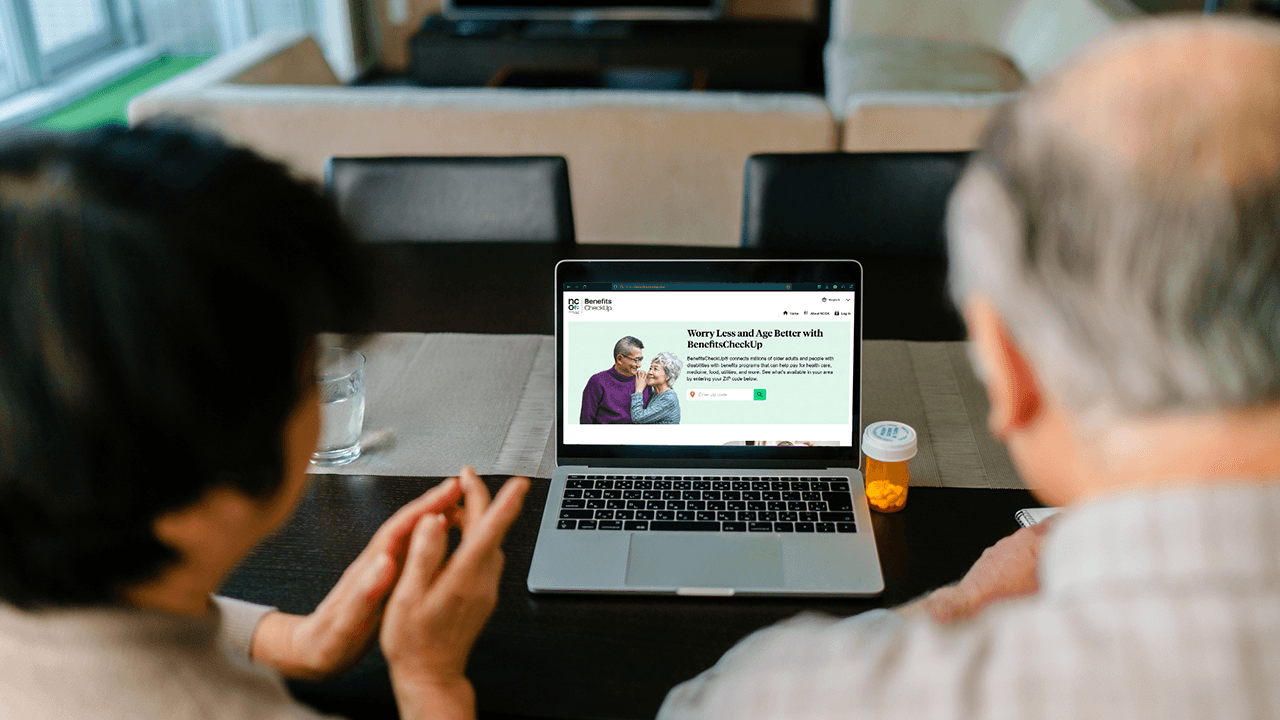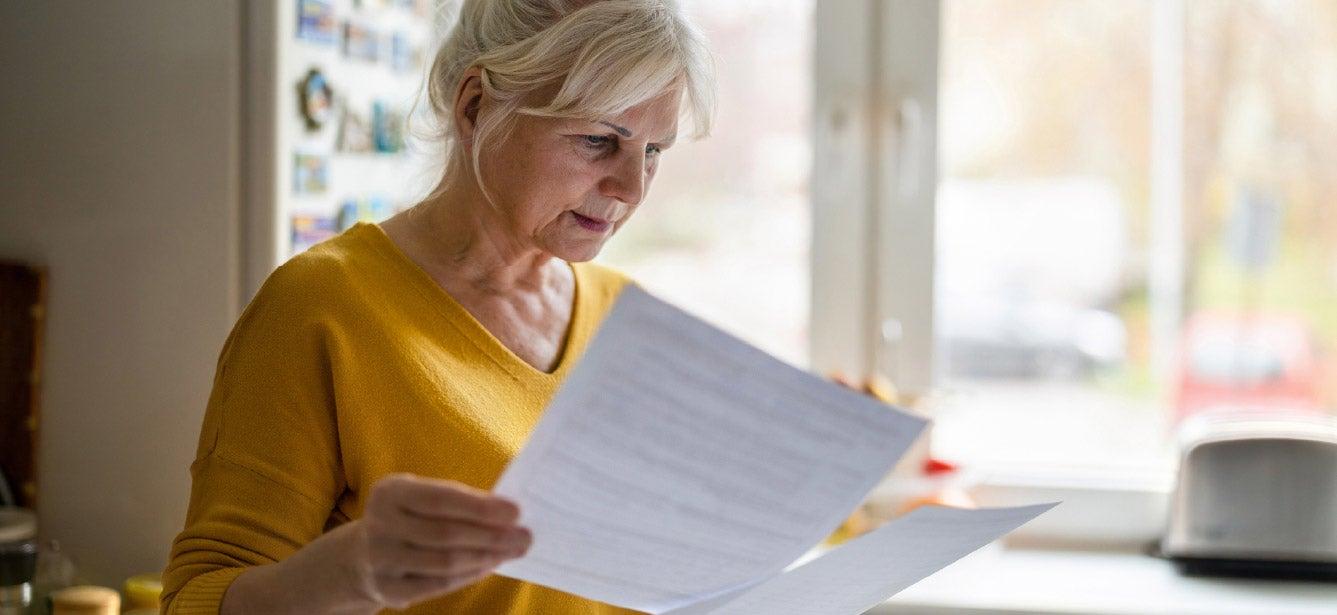What Is Medicaid Spousal Impoverishment Protection?
8 min read

Related Topics
As many as 1.2 million people live in nursing homes across the United States today.1 Of these, 62% are enrolled in Medicaid2—the primary payer for this kind of long-term custodial care in the country.3
“Most older adults who need nursing home care hope that Medicaid will help pay for it,” said Jen Teague, NCOA’s Director for Health Coverage and Benefits. “And for good reason—because Medicare won't. That leaves pretty narrow options for anyone who doesn’t have long-term care insurance or significant financial resources.”
There’s no doubt about it: nursing home care is expensive. According to Genworth’s interactive Cost of Care Survey, the monthly median cost in the United States is $7,908 for a shared room. Private rooms are even pricier at $9,034.4
Medicaid therefore bridges a critical financial gap for people who otherwise couldn’t afford such fees. But it comes with a cost. Because Medicaid sets strict income and asset limits in order to qualify for benefits, many older adults must first “spend down” their money to obtain coverage.
“It’s a double-edged sword,” Teague said. “In order for Medicaid to cover your nursing home costs, you have to give up nearly all of your assets.” And married couples face an additional worry: if one spouse needs to enter a nursing home but the other is able to live independently, will they have any money left to do it?
That’s why the Spousal Impoverishment Protection (SIP) exists.
What is Spousal Impoverishment Protection, or SIP?
First introduced in 1988,5 the Spousal Impoverishment Protection (SIP) provision prevents a community spouse from essentially going broke during—and after—the Medicaid qualification process if their married partner requires long-term nursing care.
With respect to SIP, “community spouse” is the term Medicaid uses to describe the partner who continues to live independently, outside a nursing home. Sometimes this person is also called the “well spouse.” Medicaid uses “institutional spouse” when referring to the partner who needs long-term care, though this isn’t entirely accurate. That’s because some people can get this care at home, and Medicaid will pay for it through HCBS Waivers (see the FAQ below).
“The provision’s goal is to ensure financial stability for the community spouse so they may continue to age with dignity and peace of mind,” explained Teague. “Before SIP, some married couples actually contemplated divorce as a way to protect the well partner from destitution. It was a pragmatic strategy, and also a heartbreaking one. Fortunately, it’s no longer a financial decision that anyone needs to make.”
How does SIP work? Am I eligible for it?
The SIP provision applies when the institutional spouse seeks Medicaid coverage for long-term services and supports (LTSS) while the community spouse does not need these things.
Whether or not you might be eligible for spousal impoverishment protection depends, in part, on where you live. That’s because Medicaid is a federally funded program administered by individual states who can make their own rules. This includes how SIP does and does not apply during the benefits qualification process.
That said, the provision generally works by following these basic principles when determining eligibility:
Income
- Medicaid will count the institutional spouse’s income
- Medicaid will not count the well spouse’s income
Assets
- Medicaid will take into consideration some jointly owned assets (“countable assets”)
- Medicaid will not take into consideration all of these assets (“exempt assets”)
So, what does this actually mean in real terms?
It means that if your spouse applies for Medicaid in order to pay for nursing home care, your income as the well spouse—and a certain portion of your joint assets—will be protected from spend-down.6 Further, if your own individual income is limited, Medicaid allows you to keep some of your spouse’s income, too.6
How much income and assets can the community spouse keep under SIP?
Each January, the Centers for Medicare & Medicaid Services (CMS) adjusts what well spouses are allowed to keep. CMS bases these numbers on the Consumer Price Index (which reflects the current cost of living) and that year’s Supplemental Security Income federal benefit rate.6
In 2024, the minimum and maximum income and asset limits for well spouses are set at:7
Income (also known as the Minimum Monthly Maintenance Needs Allowance)
- Minimum: $2,465
- Maximum: $3,853.50
Assets (also known as the Community Spouse Resource Allowance)
- Minimum: $30,828
- Maximum: $154,140
CMS mandates that each state adopt these federal standards, regardless of their other program eligibility rules.7
What about SIP and home equity?
Many well partners wonder about this joint asset. If you and your spouse own a home, its equity value is generally exempt from Medicaid consideration in most states as long as this home is your primary residence, and you intend to stay there.8,9
“The idea is that you will not have to sell your home in order to pay for the institutional spouse’s nursing home care,” Teague explained. “But limits do apply,” he cautioned.
First, it’s important to remember that “equity value” may not be the same as what your home is worth on the real estate market. Your equity value is the fair market value of your home, minus any outstanding mortgage(s) you owe on it.
Second, each individual state sets its own limit on how much of your home’s equity will be exempt. In 2024, that limit ranges from $713,000 to $1,071,000.7,9
“So, if you live in a state with higher property values, Medicaid may consider a portion of your home’s equity over and above their limit as a countable asset,” said Teague. “This is one of many reasons why we advise that you consult with a qualified professional—like an estate planner, eldercare lawyer, financial adviser, or all three—before applying for Medicaid for nursing home care. It’s crucial to understand all of the financial implications of doing so.”
What about SIP and retirement accounts?
Again, rules vary by state. Some view income from IRAs and other retirement accounts as countable, while others exempt it. And some view the balances held in the account(s) as countable assets, while others do not.10
The American Council on Aging has a helpful list of State Specific Medicaid Eligibility Requirements and a chart that shows States that Count IRAs and 401(k)s When Applying for Medicaid.
The bottom line
"This is a huge issue," said Teague. "Technically, anybody can apply for nursing home benefits. But some people might have to go to a Medicaid attorney to work out a deal to protect the 'community spouses' resources. I had one client set up a Medicaid Annuity (his spouse's resources) and he keep all of his resources."
Because SIP rules "are highly complex," said Teague. “You should consult an expert who understands the nuances in your state.”
Not sure where to start? Your State Health Insurance Assistance Program (SHIP) can help. Get free, personalized and unbiased advice from trained counselors who can point you in the right direction.
And be sure to visit NCOA's BenefitsCheckUp for info on additional programs that can help pay for health care and more.
Additional FAQ
What is Medicaid?
Medicaid is a public health insurance program for people with low income and limited assets. It plays a key role in removing barriers to health care access for eligible adults, children, pregnant women, and those with disabilities.
The program covers a broad range of medical services—including long-term care—and limits out-of-pocket costs. Roughly one in four Medicaid enrollees is an older adult or someone living with a disability.11
What are nursing homes?
Also known as skilled nursing facilities (SNFs), nursing homes provide ongoing medical attention and personal care services for people who need that support and can’t get it at home.
In addition to housing and three daily meals, nursing home residents benefit from a comprehensive suite of services that help with the activities of daily living (ADLs)—things like eating, bathing, getting dressed, using the toilet, and getting into and out of bed.
What are HCBS Waivers?
Medicaid’s home and community-based services waivers—also known as 1915(c) waivers—cover nursing-home level care for people who need it, and who receive it at home rather than in a skilled facility.
In 2010, Congress broadened the SIP provision to include institutional spouses who receive such care via HCBS waivers.12 This expansion allows married partners to continue living together without placing their financial security at risk.
How do I apply for Medicaid to cover nursing home care? Can I get help?
Medicaid eligibility is typically based on your income and assets, and rules vary from state to state. You may qualify for Medicaid nursing home care even if you previously have not been eligible for other Medicaid services. Reach out to your state’s Medicaid office to learn about the program guidelines in your state.
You can apply for Medicaid through your state Medicaid agency or through the Health Insurance Marketplace. Unlike Medicare, which has specific enrollment periods, you have the option to apply for Medicaid any time of year.
Sources
1. KFF. State Health Facts. Total Number of Residents in Certified Nursing Facilities (2023). Found on the internet at https://www.kff.org/other/state-indicator/number-of-nursing-facility-residents/
2. Susan Jaffe. Medicaid Weighs Attaching Strings to Nursing Home Payments to Improve Patient Care. June 10, 2022. Found on the internet at https://kffhealthnews.org/news/article/medicaid-nursing-home-payments-care-mandate/
3. Medicaid and CHIP Payment and Access Commission (MACPAC). Nursing Facilities. Long-term Services and Supports. Found on the internet at https://www.macpac.gov/subtopic/nursing-facilities/
4. Genworth. Cost of Care Survey. Found on the internet at https://www.genworth.com/aging-and-you/finances/cost-of-care.html
5. Medicaid.gov. Spousal Impoverishment. Found on the internet at https://www.medicaid.gov/medicaid/eligibility/spousal-impoverishment/index.html
6. Everette James, et al. Making Spousal Impoverishment Protections Permanent.”Health Affairs Forefront. Sept. 7, 2021. Found on the internet at https://www.healthaffairs.org/content/forefront/making-spousal-impoverishment-protections-permanent
7. Department of Health & Human Services. CMCS Informational Bulletin. Nov. 14, 2023. Found on the internet at https://www.medicaid.gov/sites/default/files/2023-11/cib11142024.pdf
8. U.S. Department of Health & Human Services. Medicaid Treatment of the Home: Determining Eligibility and Repayment for Long-Term Care. March 31, 2005. Found on the internet at https://aspe.hhs.gov/reports/medicaid-treatment-home-determining-eligibility-repayment-long-term-care-0
9. MedicareLongTermCare.org. Rules on How Home Ownership Impacts Medicaid Eligibility. Oct. 17, 2023. Found on the internet at https://www.medicaidlongtermcare.org/basics/medicaid-taking-the-home/#spouse
10. MedicareLongTermCare.org. Retirement Accounts (IRAs, 401(k)s and Pensions) and Their Impact on Medicaid Long Term Care Eligibility. Oct. 18, 2023. Found on the internet at https://www.medicaidlongtermcare.org/eligibility/impact-of-retirement-accounts/
11. Robin Rudowitz, et al. “10 Things to Know About Medicaid.” KFF. June 30, 2023. Found on the internet at https://www.kff.org/medicaid/issue-brief/10-things-to-know-about-medicaid-setting-the-facts-straight/
12. Justice in Aging. Make the Expanded Spousal Impoverishment Protection Permanent. Found on the internet at https://www.justiceinaging.org/wp-content/uploads/2019/01/Justice-in-Aging-Federal-Spousal-Impoverishment-Fact-Sheet-11-8-18.pdf




